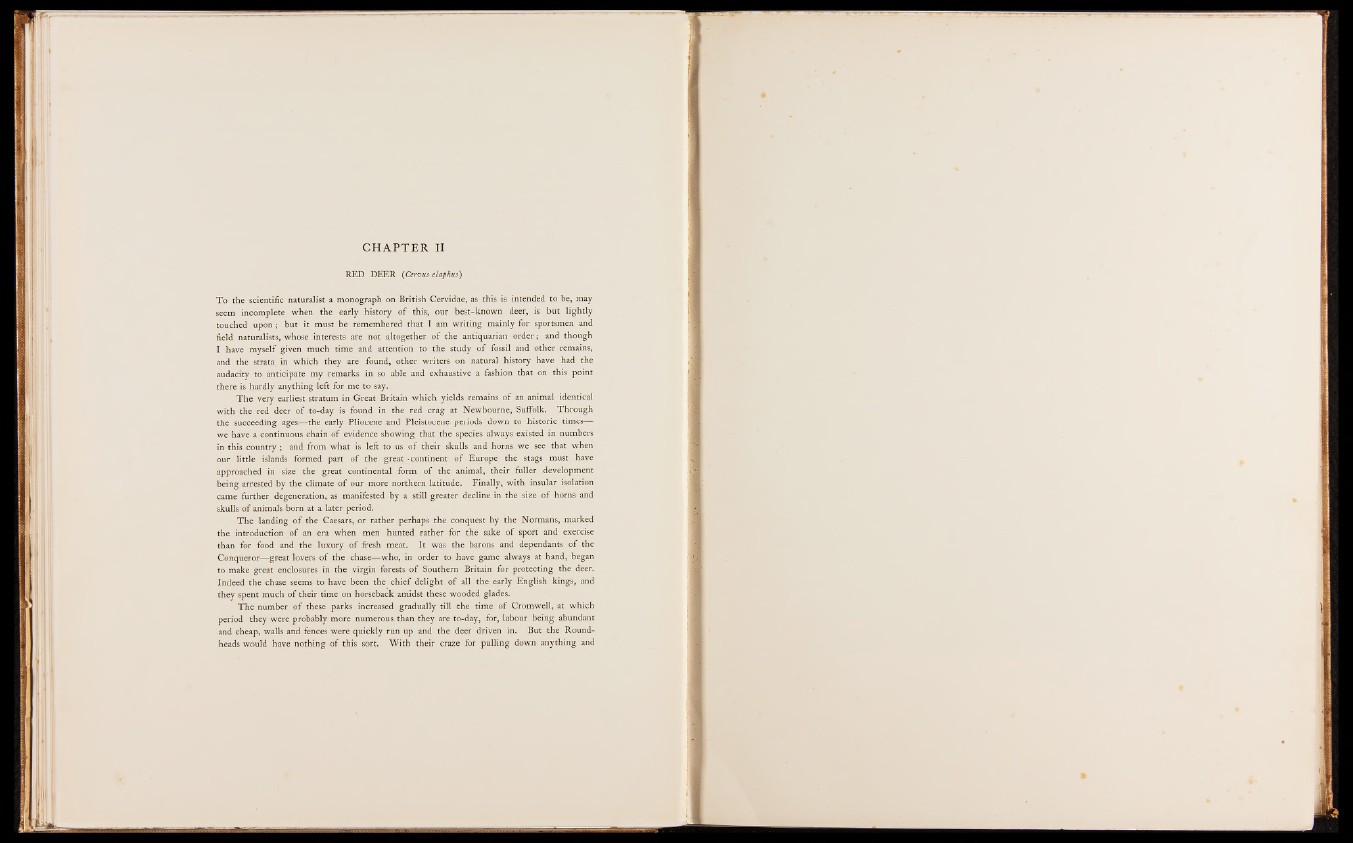
CH A P T E R II
RED DEER (Cervus elaphus)
T o the scientific naturalist a monograph on British Cervidae, as this is intended to be, may
seem incomplete when the early history o f this, our best-known deer, is but. lightly
touched upon; but it must be remembered that I am writing mainly for sportsmen and
field naturalists, whose interests are not altogether o f the antiquarian order; and though
I have myself given much time and attention to the study o f fossil and other remains,
and the strata in which they are found, other writers on natural history have had the
audacity to anticipate my remarks in so able and exhaustive a fashion that on this point
there is hardly anything left for me to say.
The very earliest stratum in Great Britain which yields remains o f an animal identical
with the red deer o f to-day is found in the red crag at Newbourne, Suffolk. Through
the succeeding ages— the early Pliocene and Pleistocene periods' down to historic times— -
we have a continuous chain o f evidence showing that the species always existed in numbers
in this country; and from what is left to us o f their skulls and horns we see that when
our little islands formed part o f the great ^continent o f Europe the stags must have
approached in size the great continental form o f the animal, their fuller development
being arrested by the climate o f our more northern latitude. Finally, with insular isolation
came further degeneration, as manifested by a still greater decline in the size o f horns and
skulls o f animals born at a later period.
The landing o f the Caesars, or rather perhaps the conquest by the Normans, marked
the introduction o f an era when men hunted rather for the sake o f sport and exercise
than for food and the luxury o f fresh meat. It was the barons and dependants o f the
Conqueror— great lovers o f the chase— who, in order to have game always at hand, began
to make great enclosures in the virgin forests o f Southern Britain for protecting the deer.
Indeed the chase seems to have been the chief delight o f all the early English kings, and
they spent much o f their time on horseback amidst these wooded glades.
T h e number o f these parks increased gradually till the time o f Cromwell, at which
period they were probably more numerous than they are to-day, for, labour being abundant
and cheap, walls and fences were quickly run up and the deer driven in. But the Round-
heads would have nothing o f this sort. With their craze for pulling down anything and